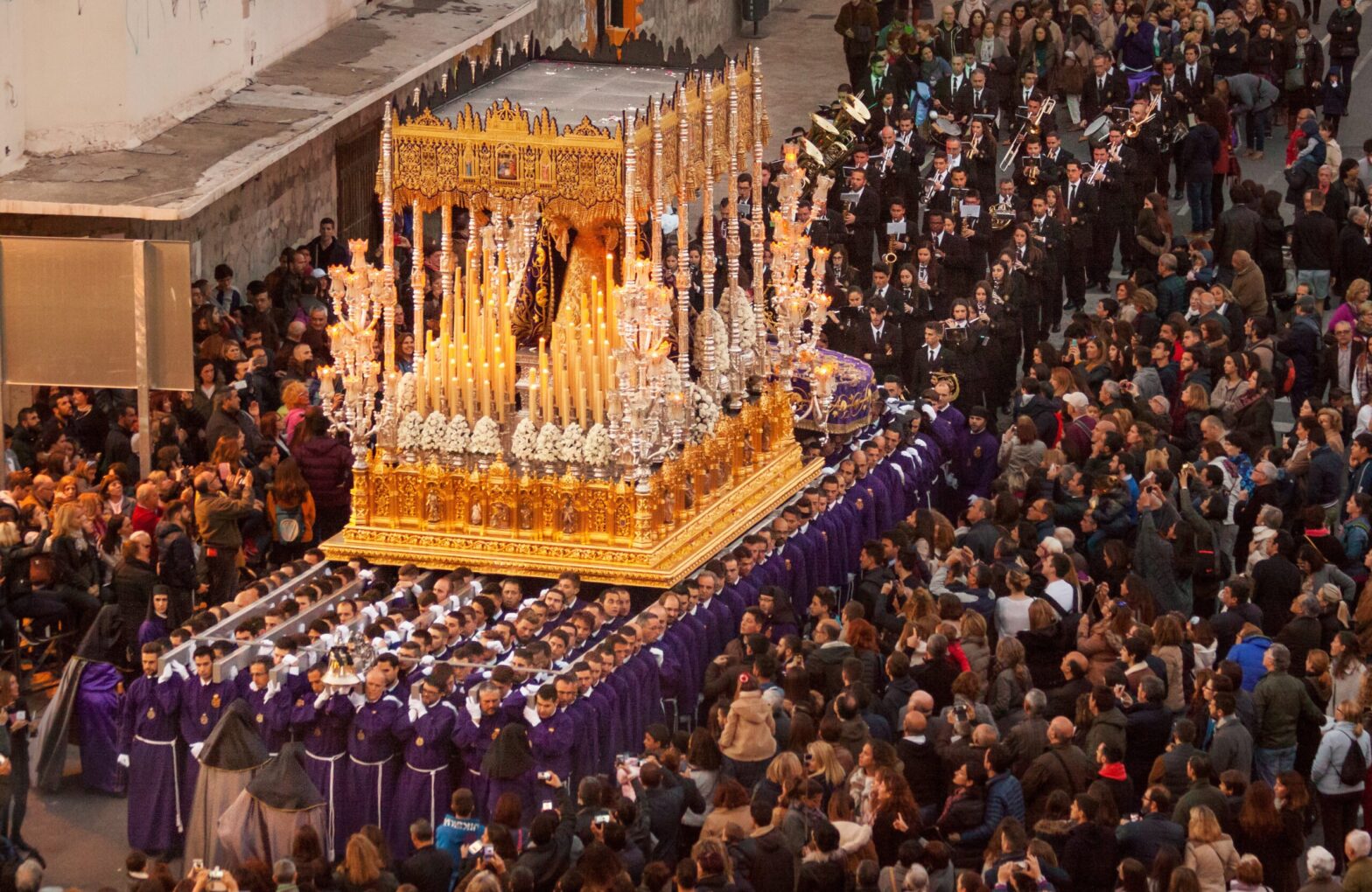Easter in Andalusia, known as Semana Santa, is one of the most important and festive events of the year. The celebrations begin on Palm Sunday, when people take to the streets to greet Jesus, who rides into town on a donkey.
Spain is a country that has been considered a bastion of Catholicism for centuries. This is evidenced by the fact that it was the official and state religion from the sixth century until the end of the 20th century. It was also the home of the famous Spanish Inquisition, set up in 1480 by the royal couple Ferdinand II and Isabella I, which, following the expulsion of Muslims from the Iberian Peninsula, was dedicated to tracking down more or less alleged deviations from the faith.
Today, the picture of Spain is somewhat different than it was a few hundred years ago, but still almost 70 per cent of the Spanish population is Catholic, so it should come as no surprise that the most important festival, Easter, has been celebrated lavishly by the inhabitants of the Iberian Peninsula for hundreds of years.
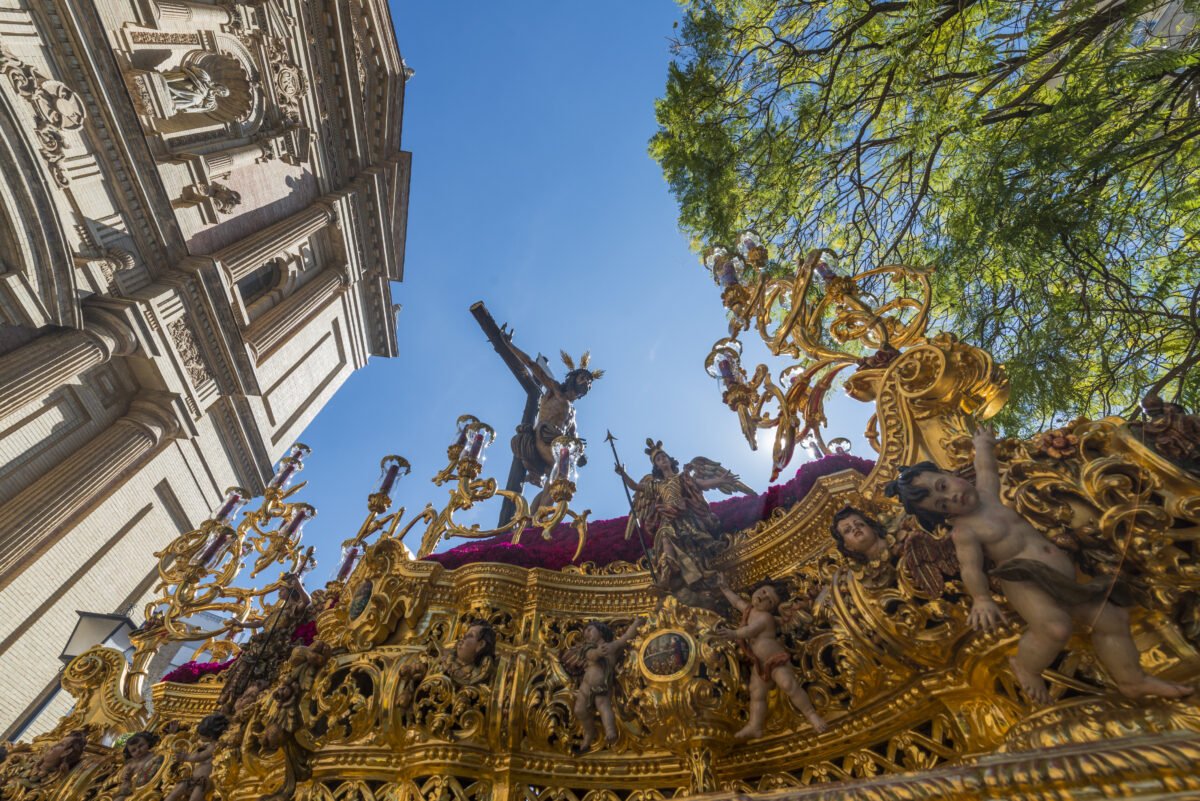
Colourful processions in the streets
The Spanish tradition of celebrating Easter is different from the one we know in Poland. While we paint Easter eggs and prepare holly which we then carry to church, and the shop shelves are bursting with all sorts of Easter decorations – bunnies, baskets and chickens, in Spain the celebration of Easter has a more mystical shape.
The Easter period in Spain is called Semana Santa, or Holy Week, which begins on Palm Sunday. While the preparations for the festivities are underway in Poland, in Spain they are already being fully celebrated. From Sunday to Sunday, processions are organised in most towns and cities as the most important part of the celebrations. These events are held on a grand scale and participation in them is one of the traditions in Spain.
The city that is best known for its Semana Santa celebrations is Seville, the capital of Andalusia, often referred to as the Marian City. The tradition of the city’s processions dates back to the late 16th century and early 17th century. The first procession was ordered in 1604 by the then Cardinal Fernando Niño de Guevara. Today, thousands of tourists from all over the world flock to Seville every year to enjoy the local Semana Santa celebrations.
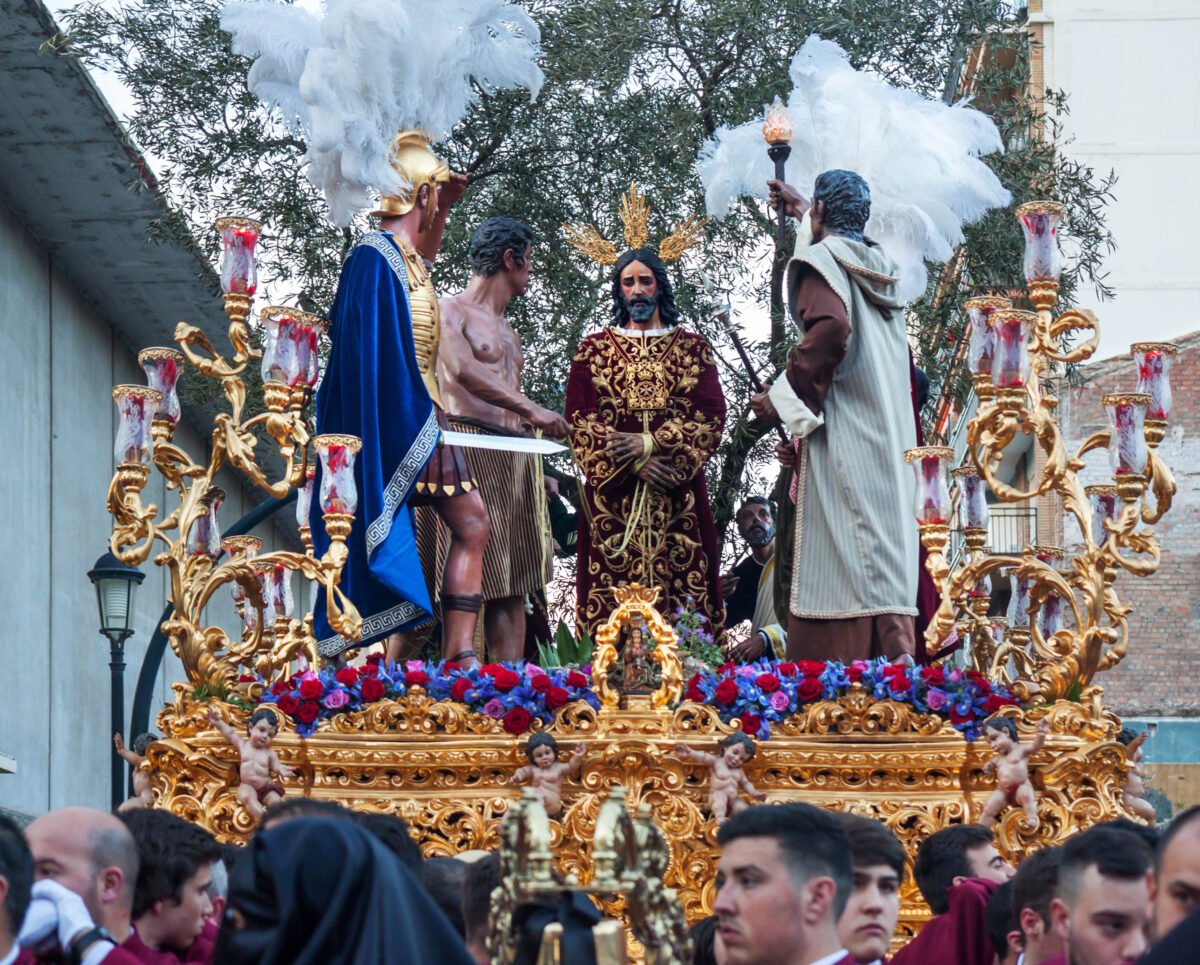
How does the procession proceed?
The front of the procession is usually marked by a huge, richly decorated cross(cruz de guia), symbolising the Passion of Christ. Music plays an important role in the celebrations, and local marching bands often take part in the processions to perform religious music.
Each participant in the procession is assigned a specific role, and their attire, insignia carried and accessories are regulated by the internal code of the brotherhood. Special attention is usually drawn to the nazarenos, who wear the penitential robes(capirote), consisting of characteristic conical hoods covering their heads and faces, and loose tunics tied at the waist with string or ribbon.
The capirote here derives from a medieval tradition, when it was reserved for penitent people who, as a sign of penance for their sins, walked through the town wearing hoods that covered their faces tightly so that they could not be considered sinners. Women often wear amantilla (mantilla), which is a black lace shawl draped over the head and shoulders.
An important role in every procession is also played by the so-called costaleros, men who carry on their shoulders the wooden platforms(pasos) on which the various scenes from Christ’s Passion are depicted. Some of the statues carried are even several hundred years old and are considered works of art. The weight of the figures carried should rest on the seventh cervical vertebra, protected by a special piece of cloth. The pace of the procession is set by the so-called capataz, who points the way for the men carrying the pasos. The capataz is the mayordomo of the throne a veritable conductor of the procession. Facing the altar, he gives commands to the brothers, directs their movements and pace and controls the manoeuvres with the altar. By striking a bell suspended by the throne, he gives the signal for a few minutes’ rest during the procession and its conclusion.
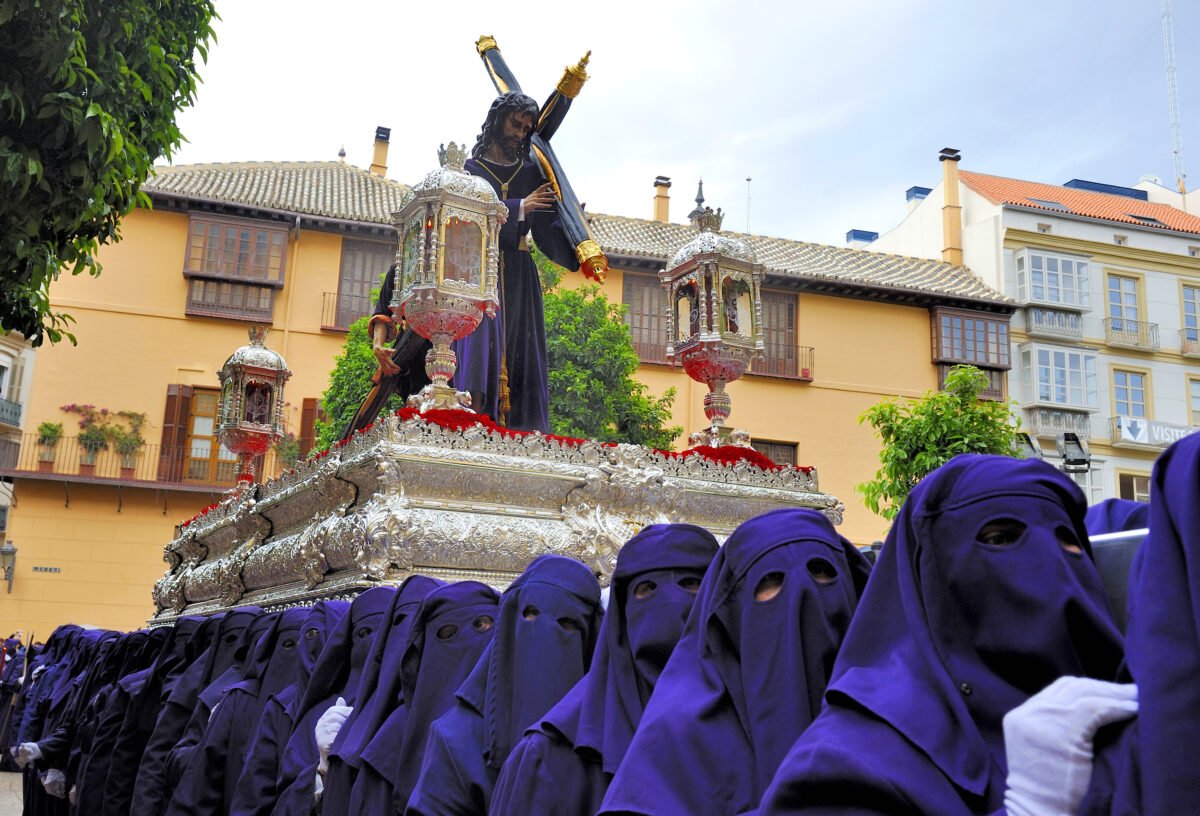
Brotherhoods have been operating for centuries
The organisation of processions through the streets of Spanish cities is a huge undertaking, for which the penitential confraternities known as cofradías are responsible. They bring together the faithful – both clergy and laity – belonging to specific parishes. The oldest confraternities, still in existence today, were founded in the 15th to 16th centuries. What distinguishes the associations is the individual code, as well as the colour of the robes or insignia attesting membership.
Membership of the confraternities is maintained from generation to generation – family members regard it as part of the family tradition. Today, the largest parishes have up to several thousand members and it is these members who actively participate in the processions. The most recognisable, and at the same time most characteristic of the Semana Santa celebrations, are the members of the confraternities called nazarenos, celebrating Easter in penitential robes. They wear pointed hoods on their heads – covering their faces, except for the eye opening. During processions they carry long candles, crosses or the insignia of the brotherhood.

During the procession, members of the confraternities carry large platforms, known as pasos, which carry statues of Christ, the Virgin Mary and passion scenes. An old tradition, which is almost unheard of today, is self-flagellation by penitents. Only men were allowed to take part in this ritual.
Almost 70 confraternities now take part in the Semana Santa celebrations in Seville, allowing the most impressive processions to pass through the streets of the Andalusian capital throughout the week, admired by tens or even hundreds of thousands of people, including numerous tourists from all over Spain and Europe.
More information:
Learn about Easter customs in Andalusia
What’s there to see when visiting Malaga during Holy Week? [SCHEDULE]
Processions in Malaga
Málaga celebrates Semana Santa in a big way every year. Residents take part in numerous processions, of which there will be 45 during this year’s celebrations! At the same time, they all follow the same route – starting at Plaza de Constitution, going along Calla Larion, then Alameda Principal and heading towards the Cathedral. If you want to admire Spain’s most important religious event in all its glory, be sure to line up along this route.
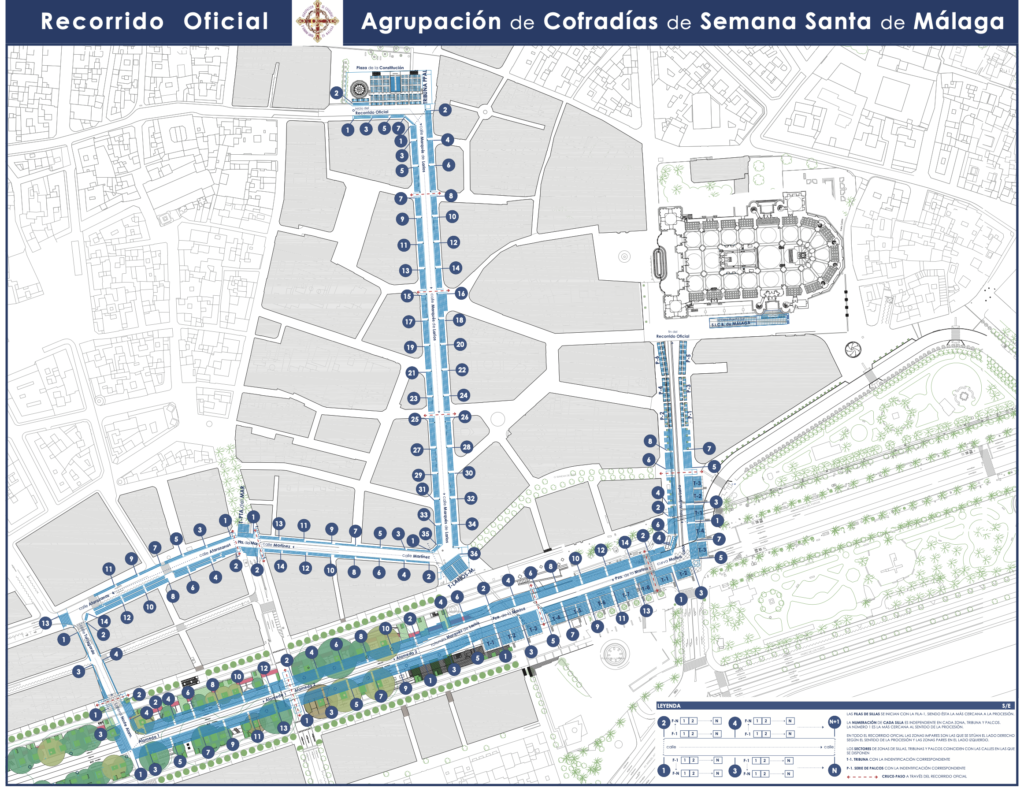
Palm Sunday
The procession will officially begin on 13 April, Palm Sunday. The most attention will undoubtedly be drawn to the tronos, which will include the Cofradia Pollinica altar, depicting Jesus’ entry into Jerusalem on a donkey. On this day, the procession is always well attended by children – dressed in tunics and carrying Easter palms.
If you happen to attend a procession among the representatives of the Lagrimas y Favores fraternity, don’t be surprised if you meet… Antonio Banderas. The Spanish actor has been one of Andalusia’s ambassadors for many years and proudly participates in the Semana Santa celebrations.

Holy Monday
On Easter Monday, we strongly recommend taking part in the extremely colourful and joyful procession organised by the Gitanos brotherhood. Its members, singing and dancing, follow a throne with Christ with a breakfast complexion. On this day, Málaga’s most popular altar of Jesus the Captive, El Cautivo, also passes through the city. The procession, which lasts until 4am, gathers thousands of people.
Maundy Tuesday
The longest procession during the entire Semana Santa is organised on Holy Tuesday by the Nueva Esperanza brotherhood. It starts in the afternoon and lasts as long as 12 hours. On that day, you will see the Virgen del Rocío, known as the ‘Bride of Malaga’, the altar of the Rocio confraternity with the figure of Mary dressed in white robes. An additional eye-catching element for the viewers is the woven cloak of living flowers in which the statue of the Virgin is clothed.
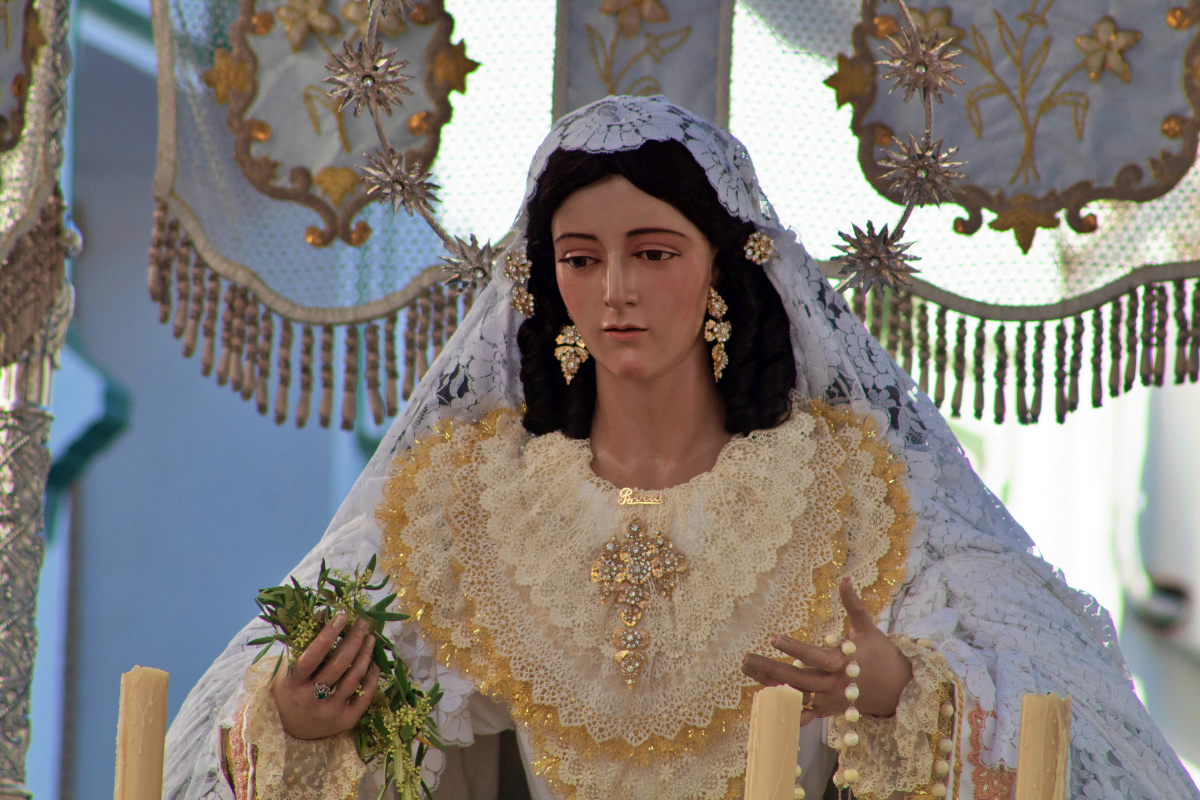
Holy Wednesday
The processions that take place from Holy Wednesday to Easter Sunday already have a more traditional and classical dimension. On this day, in the streets of Málaga, we will see a procession in which the faithful carry one of the heaviest tronos of Málaga, the Virgen de la Paloma. It is carried by 290 friars and the whole march is further decorated with pigeons being released.
Maundy Thursday
On Maundy Thursday – symbolising the Last Supper – in the streets of Málaga you will meet the tronos with the largest number of statues of saints, looked after by representatives of the Cena confraternity. One of the best-loved and most famous processions, the Mena, organised by the Cristo de la Buenamuerte brotherhood, also takes place on this day. As on the day before, the parade involves uniformed soldiers – the legionaries, singing the song ‘Novio de la muerte’, carry the cross with Christ, while the navy soldiers proudly march with the altar with Mary.
Good Friday
Good Friday is a day of utmost solemnity – lived in reflection. On this day, participants in the Semana Santa celebrations set off from almost all of Málaga’s historic districts and almost all processions take place without an orchestra. One of the most exciting processions is that of the Monte Calvario confraternity, with an altar representing Jesus taken down from the cross in the embrace of Mary. The procession of the Sepulcro confraternity, on the other hand, is the official procession of the whole Holy Week, attended by the city authorities and representatives of the most important institutions. The burial of Jesus is symbolised by a throne with his statue placed on a catafalque. The Good Friday celebration closes with the procession of the Confraternity of the Virgin Servitas with the altar of Mary, which takes place in darkness and with the prayers of its brothers recited loudly.

Easter Sunday
After Holy Saturday without a procession, Holy Week ends on Easter Sunday with the procession of the Risen Christ, organised by the Association of Confraternities – which is the head of all confraternities in Malaga. Compared to Friday’s celebrations, Sunday’s procession – full of colour – is filled with a joyful atmosphere, with participants proudly celebrating Christ’s resurrection. During the city’s parade, we can admire the altar of the Risen Jesus and Our Lady Queen of Heaven. The procession begins at the cathedral and passes through the city centre amidst jubilant shouts, cheers and applause from the local community and tourists from many parts of the world.
Easter treats
Easter in Spain also has its culinary traditions. On the Iberian Peninsula on Easter Sunday, families first go to mass and then sit down together at a table with dishes such as:
- Torrijas: a dish very similar to French toast, usually eaten at Easter. It consists of bread, dipped in milk and egg, then fried and topped with sugar or coated with honey. Sometimes we can also find a version with burnt sugar on top – similar to crème brûlée.
- Pestiños: crispy, deep-fried pancakes, flavoured with aniseed and orange and glazed with sugar or honey. This is the dish you will find most often on Andalusian tables.
- Monas de Pascua: Spaniards place great importance on sweets on their festive tables. Monas de Pascua is an Easter cake often found in the regions of Catalonia and Valencia. Traditionally, they consist of sweet bread discs, reminiscent of our Polish yeast cakes with a whole, painted egg placed in the centre, and are sprinkled with candied pieces of fruit and sugar.
- Buñuelos: small doughnuts with irregular shapes. They are deep-fried and usually sprinkled with sugar.

